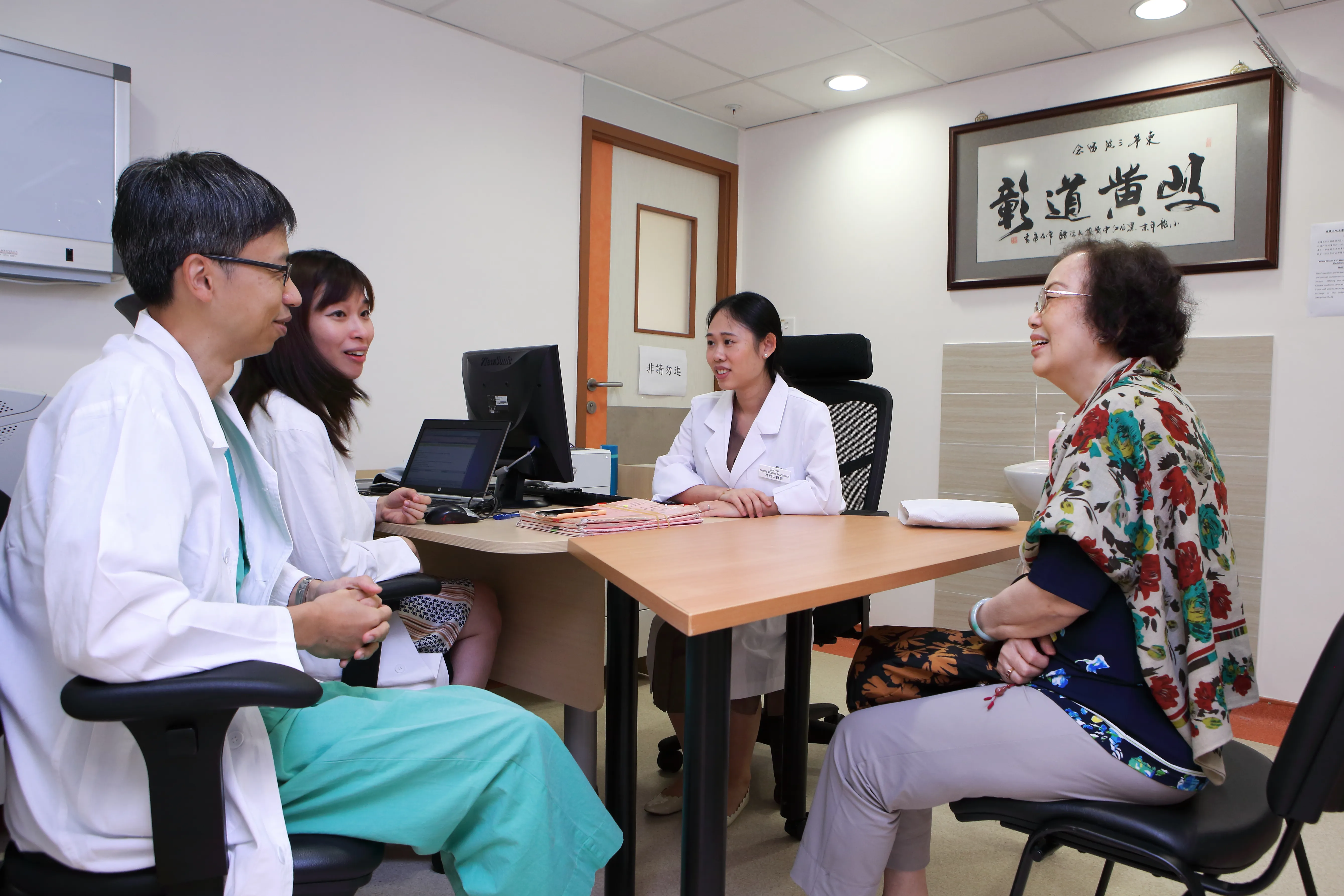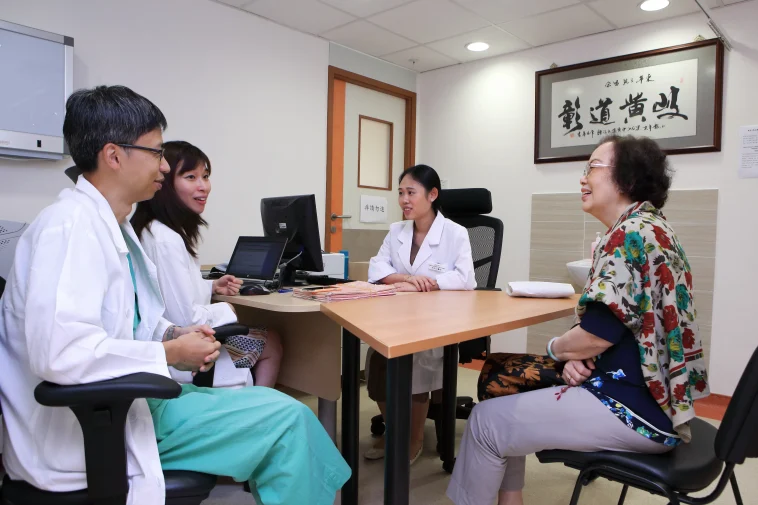
Impact of Outdated Web Browsers on Accessing Modern Health Research
In an age when cutting-edge medical research is just a click away, many people find themselves hitting digital roadblocks due to outdated web browsers. This issue is more than a mere annoyance—it represents a barrier to accessing essential health information. Whether it’s reading about modern medicine breakthroughs or exploring alternative treatment options, up-to-date technology is key for anyone looking to walk through the digital corridors of health research.
Modern medical literature is evolving at a rapid pace, and digital platforms like ScienceDirect deliver vital health insights. However, when these platforms signal that your browser is outdated, it sends a clear message that technology and health research are now tightly intertwined. This editorial takes a closer look at the tricky parts of staying current in the technology realm, especially as it applies to healthcare information access, and highlights why updating your digital tools is more than just a technical recommendation.
Why Upgrading Your Browser is an Essential Healthcare Practice
Browsers are not merely gateways to the online world—they are crucial companions in the journey to find accurate, trustworthy health content. When browsers are outdated, several risks emerge, including security vulnerabilities, reduced website functionality, and even compromised access to scientific journals. Here are some of the key reasons why updating your browser is critical in the modern healthcare context:
- Improved Security: Modern browsers come with advanced security features indispensable for safeguarding personal data, especially in an era when cyberattacks are common.
- Enhanced Compatibility: Newer browsers are designed to interpret the latest web protocols, meaning that they can seamlessly display complex health websites and scientific content.
- Better Performance: Faster load times and smoother user interfaces allow users to get to the important insights quickly without getting stuck in complicated pieces of lag.
- Up-to-date Features: Modern browsers integrate features such as built-in translators, content blockers, and even reading modes to customize how you digest content.
By making sure your browser is current, you ensure that you are not only seeing the most relevant and secure information but also that you are positioned to benefit fully from the advancements in digital healthcare technology.
Digital Gateways: The Changing Landscape of Health Information Portals
The rise of digital platforms has transformed the way we consume health research. Websites that once offered static information now provide dynamic, interactive experiences. However, with these changes come a series of tangled issues that require users to keep pace technologically. Here are some aspects of this transformation:
- Interactive Content: Many platforms now include videos, animations, and interactive charts that require modern web standards to render correctly.
- Personalized Experiences: Algorithms and AI are deployed to offer personalized content, whether it’s recommendations for diabetes care or tailored nutritional advice.
- Data-Intensive Tools: Features like text and data mining, which some providers now use for AI training, demand the latest in browser technology to function smoothly.
Users are increasingly faced with overwhelming amounts of information, so it is essential to steer through the digital environment with tools that can handle the fine points of current web technologies. When browsers lag behind, the user’s ability to benefit from the rich content available online is greatly diminished.
Modern Medicine and Digital Accessibility: Overcoming Tech Challenges
The realm of modern medicine is steeped in scientific findings and data-intensive publications. As much as we celebrate the progress in healthcare, there remain several nerve-racking digital challenges that users encounter today:
- Security Risks: Outdated browsers often do not support modern encryption methods, exposing users to potential breaches when accessing sensitive health information.
- Interface Limitations: Key features on platforms may not render properly on older browsers, leading to a frustrating user experience with elements that simply refuse to load.
- Accessibility Issues: Critical tools for individuals with disabilities, like screen readers and voice navigation, may not perform well or at all with unsupported browser technology.
Finding your way in this digital landscape requires a proactive approach—regularly updating your browser isn’t simply about convenience; it is about protecting yourself and ensuring that medical and fitness information is readily accessible. This is particularly important in a context where emerging health research can present complicated pieces of information in layered, interactive formats.
The Symbiosis of Alternative Medicine and Digital Health Resources
Alternative medicine has steadily gained popularity as patients seek holistic ways to manage health conditions, explore natural remedies, or simply supplement conventional approaches. Digital resources play a super important role in bridging the gap between conventional and holistic treatments. Many platforms provide a blend of articles, user testimonials, and research studies that shed light on alternatives to modern medicine.
Yet, as with modern medicine, the successful presentation of alternative medical knowledge is dependent on the ability to access well-maintained digital platforms. When users encounter outdated browser notices, they find themselves barred from a treasure trove of content on herbal therapies, acupuncture, and holistic nutrition. In effect, both modern and alternative medicine benefit when technology systems function correctly. The following topics underline how technology aids this interaction:
- Reliable Sources: Quality health information—whether it is for pharmacological interventions or herbal supplements—must come from well-protected, secure sources.
- Diverse Opinions: Digital platforms provide space for multiple perspectives, allowing users to compare modern research with traditional practices.
- Interactive Learning: From web seminars to multimedia presentations, digital health resources allow individuals to learn in interactive, engaging ways that require fully supported browser technology.
For those who believe deeply in alternative medicine, ensuring you have the latest digital tools is as instrumental as any alternative remedy in staying informed and making healthy choices. It is about ensuring full access to the subtle parts of health content, where even small distinctions can lead to significantly different health outcomes.
Nutrition, Disease Conditions, and Fitness: Intersecting Digital Advancements with Health Outcomes
The digital age has also revolutionized how we approach everyday topics such as nutrition, disease conditions, and fitness. With an abundance of online resources, readers can now access guides, recipes, exercise plans, and patient testimonials almost instantaneously. Yet, outdated browsers can turn what should be a streamlined experience into an off-putting series of obstacles.
Consider the following benefits that a updated digital platform brings to the table for health enthusiasts:
- Smooth Content Interaction: Up-to-date browsers allow dynamic content like nutritional trackers and interactive fitness assessments to load properly, ensuring that the user experience is both intuitive and supportive.
- Reliable Data Presentation: Medical statistics and nutrition guides often come in the form of extensive tables, graphs, and interactive data views that require modern browser capabilities.
- Enhanced Multimedia Support: Videos on disease prevention, exercise tutorials, and guided wellness sessions perform best when your software can support the latest in HTML5 and CSS3 standards.
Below is a sample table comparing the performance features of modern versus outdated browsers when handling health-related multimedia content:
| Feature | Modern Browser | Outdated Browser |
|---|---|---|
| Security Protocols | Latest encryption algorithms | Vulnerable to breaches |
| Content Rendering | Smooth interaction with interactive charts | Slow or incomplete rendering |
| Multimedia Support | High-definition video and interactive tutorials | Low-quality playback or no playback |
| User Interface | Adaptive design for mobile and desktop | Static, inflexible layouts |
This table underscores the critical need for keeping your software up to date—as these differences can have a direct impact on how effectively health information is communicated and perceived.
Getting Around the Nitty-Gritty Issues of Digital Health Information Access
When we talk about accessing online health data, there are numerous small distinctions that may seem trivial but can have a major cumulative effect on user experience. Many individuals are unaware of the subtle parts that contribute to the overall quality of digital health resources. Let’s take a look at some of the most common issues and how they can be remedied:
- Outdated Security Measures: Without current security protocols, you might be exposed to hidden complexities such as malware or phishing attempts disguised as official health notices.
- Inconsistent Presentation of Data: In older browsers, charts and graphs might not appear correctly, leading to misleading interpretations of disease statistics or nutritional information.
- Poor Navigation Tools: Finding your path through a maze of information can become overwhelming if the browser’s interface is clunky and unresponsive.
Addressing these issues requires a dual approach: updating your browser is a necessary first step, and so is choosing reputable sources that invest in user-friendly digital design. By taking proactive measures, you ensure that the wealth of modern medical knowledge is accessible and presented in a way that anyone can understand without getting stuck in the confusing bits of incomplete data.
Working Through the Challenges of Digital Health Platforms with Modern Innovation
The journey to fully benefit from online platforms isn’t always straightforward—in fact, it can be full of problems when digital tools fall short of modern standards. However, it is possible to manage your way around these annoying obstacles with the right mindset and tools. Here are some practical tips for ensuring a smooth online health research experience:
- Regular Updates: Set reminders to check for browser updates every few weeks to benefit from security patches and new features.
- Security Practices: Use multi-factor authentication and reputable antivirus software to enhance your personal data security.
- Trusted Websites: Bookmark sites known for their reliable health journalism and research publication.
- Feedback and Support: If you’re having trouble with a health platform, don’t hesitate to reach out to their support team or check their FAQs for troubleshooting steps.
Utilizing these strategies not only enhances the quality of your daily digital interactions but also supports an ecosystem where health research is more accessible and reliable. The integration of modern digital platforms with traditional healthcare resources is a mutually beneficial development, ensuring that cutting-edge research is available to everyone regardless of where they are in the digital usability spectrum.
Dive in to the Future of Healthcare Information Accessibility
The digital revolution in healthcare is not a temporary trend—it is here to stay. With the rapid evolution of research and technology, staying current is super important for both professionals in the healthcare field and for everyday consumers. As publishers, scientists, and healthcare providers invest in advanced digital platforms to distribute medical content, users must find a path through updating their technology to enjoy these benefits fully.
Looking forward, several trends are emerging that promise to further bridge the gap between cutting-edge research and its consumption by the public:
- Artificial Intelligence in Health Research: AI is now being incorporated into digital platforms to curate content, analyze user behavior, and even assist with diagnosing conditions—provided the underlying software can handle the subtle details of high-load computations.
- Interactive Webinars and Virtual Conferences: New models of sharing health research offer direct interaction between experts and the public, a process that demands reliable, modern browsers for the best experience.
- Mobile Optimization: With an ever-growing number of users accessing health content via smartphones, ensuring that digital platforms are mobile-friendly—all while offering a secure and streamlined environment—is paramount.
These advancements reveal that the path to comprehensive digital healthcare is clear but requires all users to make a concerted effort in keeping their digital tools as updated as the research itself. Whether you are a healthcare professional, a patient, or simply someone who seeks accurate, trustworthy health information, staying on top of technology is no longer optional—it’s a necessary component of your health journey.
Real-Life Impacts: Personal Stories of Technology, Health, and Journey
Several personal anecdotes highlight how crucial modern digital access has become in the healthcare arena. Consider the case of a health blogger who recently recounted their struggle when an outdated browser impeded access to the latest research on nutritional therapy. What began as a nerve-racking experience quickly turned into a learning opportunity when the blogger upgraded their browser and discovered a wealth of interactive research tools and webinars that made the experience far more enriching.
Similarly, patients with chronic disease conditions have reported missing out on crucial treatment updates due to technical glitches that arise from using unsupported browsers. These narratives remind us that the digital experience is not merely a background process but a live element in maintaining one’s health literacy and engagement with ongoing research. A small step like updating your software could open a gateway to transformative health information and compliance with best practices in digital literacy.
Integrating the User Experience with Health and Tech Innovations
Integrating the user experience into the quality of digital health information is a multifaceted challenge. Providers need to make sure that their target audience can easily and reliably get around the plethora of available information. By focusing on user-friendly design and state-of-the-art technology, digital health platforms can offer content that is not only comprehensive but also practical for everyday use.
Some elements that contribute to a superior user experience include:
- Intuitive Navigation: A well-designed site helps users figure a path through complex content without getting lost in a sea of confusing bits.
- Fast Load Times: Every second counts when you’re trying to get up-to-date research quickly, which is why modern browsers play such an essential role.
- Responsive Design: From desktop to mobile, content should adapt to varying screen sizes, ensuring a smooth journey for every user.
- Accessibility Features: Additional tools like voice commands and text enlargement can make critical health data reachable for all, regardless of physical or technical limitations.
By focusing on these key aspects, the integration of technology and health research evolves into an empowering model. It’s about taking the wheel in an ever-changing environment where every update, every improvement in site design, contributes to a more inclusive and robust healthcare information landscape.
Conclusion: Taking an Active Role in Your Digital Health Landscape
In conclusion, as digital platforms continue to play a super important role in disseminating health information, it is imperative for every individual to keep their browsers and digital tools updated. Whether you’re accessing detailed studies on modern medicine, searching for alternative treatments, delving into the latest nutrition tips, or exploring the most effective fitness regimes, the technology you use directly affects the quality of the content you consume.
This discussion is more than a technical guide—it’s an invitation to reflect on the profoundly intertwined relationship between our digital lives and our health. Each update and every proactive step you take not only ensures that you stay abreast of today’s research but also secures a foundation for healthier, more informed decisions in the future.
As we move into a future that is as full of promise as it is slightly intimidating in its technological demands, remember that keeping pace with modern developments is a shared responsibility. Both content creators and consumers must cooperate, learning to figure a path through the tangled issues that arise along the way. Your active involvement, from updating software to engaging with interactive health resources, transforms a nerve-racking process into an empowering journey. Ultimately, this proactive approach enriches our collective well-being and fortifies the bridge between evolving digital health platforms and accessible, reliable healthcare information.
When we take a closer look at our digital habits and invest in the right tools, we not only stay secure and informed but also contribute to a future where innovations in healthcare—and how we access that healthcare—are seamlessly integrated into our daily lives. The twists and turns of this digital journey are many, but each step you take ensures that you remain at the forefront of both health and technology. Empower yourself: update your browser, explore reputable health platforms, and be part of the exciting evolution of digital healthcare.
In a world in which information is power, ensuring that your digital gateway is secure, fast, and fully compatible with modern standards is an essential task. Whether you are a seasoned professional in the health sector or simply a keen enthusiast eager to learn, staying updated is not just about technology—it’s about putting your health first. As we continue to steer through the evolving landscape of health research aided by digital innovation, let us embrace the necessary changes, invest in our digital readiness, and ultimately, open new doors to better health outcomes for everyone.
Originally Post From https://www.sciencedirect.com/science/article/abs/pii/S0378874125010931
Read more about this topic at
Turn off “outdated browser” warning
I get pop ups that my chrome version is outdated and that it …


